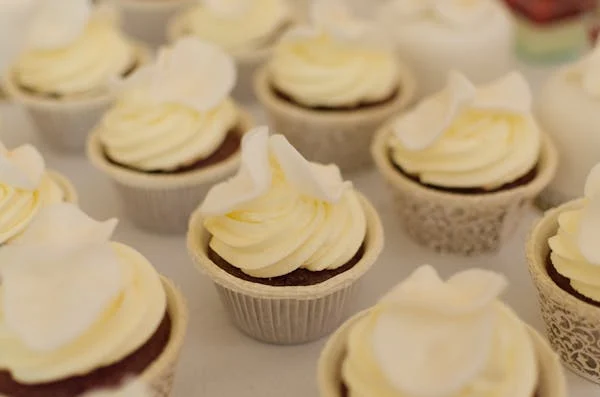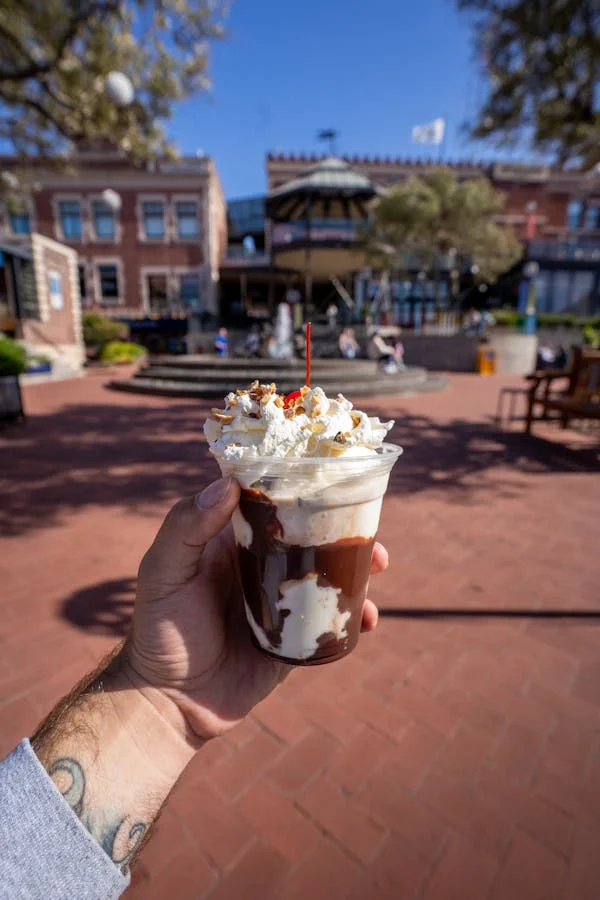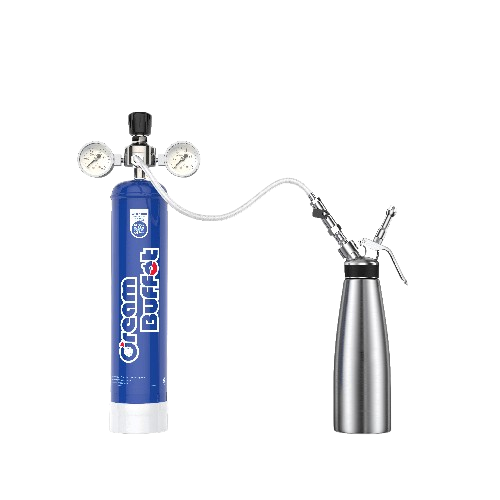When choosing an N₂O cream charger, many people may think that all they need is a high-pressure gas cartridge and a charger. However, there’s more to it than that. Temperature has a huge impact on N₂O cream chargers, especially as temperatures start to drop in fall and winter. Have you noticed that the charging results seem a bit different in colder weather? Temperature changes don’t just affect everyday life; they also significantly influence the performance of N₂O chargers. Different temperatures lead to variations in handling and whipping results. For a better charge and fluffier cream, selecting a charger that suits the temperature environment, along with proper storage, is essential.
However, many people aren’t fully aware of the relationship between temperature and performance, which can lead to issues like inconsistent charging or unsatisfactory cream texture. This not only affects ease of use but can also increase costs. Knowing how to optimize your charger in various temperatures helps you achieve ideal cream consistency while reducing unnecessary maintenance or replacement costs.
Next, we’ll share practical tips on temperature control and storage to help you use your N₂O cream charger efficiently in any conditions, ensuring the best cream texture every time.

“Lethargic” State in Cold Environments
When temperatures drop, N₂O gas molecules slow down, reducing pressure and slowing the charging process. When you store your N₂O cream charger in a cold place, like outdoors or in the fridge, the gas flow weakens during release, which reduces the charging effect. As a result, the whipped cream may lack enough expansion, creating a dense texture with smaller bubbles, missing that soft, fluffy feel.
Solution: Before use, let the charger sit at room temperature for a while to “warm up.” Alternatively, on cold days, warm the charger’s exterior slightly with warm water, but don’t overheat it, as this can affect product safety.
“Active” Behavior in Warm Environments
On the other hand, as temperatures rise, N₂O molecules become very active, increasing pressure inside the charger. Using a charger in a high-temperature environment can lead to excessive cream expansion and even potential safety risks. Avoid exposing the charger to direct sunlight or placing it in overly hot areas.
Tip: In summer or at outdoor events, keep the charger in a shaded spot or cool it with an ice pack. This keeps gas stability higher, allowing the cream to have a more desirable texture.
“Optimal Performance” at Room Temperature
N₂O cream chargers perform best at room temperature (around 20°C-25°C). At this range, the gas maintains a balanced activity level, avoiding the “laziness” of cold and the “overactivity” of heat. When possible, aim to charge and whip cream at room temperature for a light, smooth consistency.
Tips for Special Environments
When using a cream charger outdoors or at a picnic, temperature fluctuations are common. Prepare an insulated bag or cooling and warming equipment to keep the charger’s temperature relatively stable. This way, even in unpredictable weather, the charger can work consistently.
Storage Temperature Tips for Chargers
When not in use, especially in extreme temperatures, always store the charger at a suitable temperature. Cold can make parts brittle, while heat may cause the gas to expand excessively, impacting charger lifespan. For safety, store the charger in a cool, dry place out of direct sunlight.
Storage Recommendations
To ensure the longevity of your N₂O cream charger, the storage environment and method are very important. Here are some practical storage tips to help maintain safety and functionality when storing your charger:
- Avoid Direct Sunlight
Store the N₂O cream charger in a cool, dry place, avoiding areas exposed to direct sunlight. High temperatures and sunlight can cause gas expansion, increase pressure, and even affect the charger’s sealing. - Maintain a Stable Temperature
The ideal storage temperature is between 10°C and 25°C. In extreme temperature conditions, such as outdoor summer heat or winter cold, take precautions. For summer, use a cooling bag to prevent excessive heat, and in cold winter, keep the charger in a relatively stable indoor space. - Avoid Humidity
Humid environments can cause rust on metal parts, so store the charger in a dry area. If storage in a humid place is unavoidable, consider placing some desiccants inside to reduce moisture and keep the charger dry, preventing performance issues. - Keep Away from Fire and High-Temperature Appliances
Since N₂O gas is flammable, avoid storing the charger near fire sources or high-temperature appliances like stoves, heaters, or microwaves. This reduces the risk of pressure changes and safety hazards due to increased temperatures. - Check for Seals
Before using the charger after long storage, check for seals to ensure there are no signs of gas leaks. If you notice gas leakage or seal deterioration, replace the relevant parts or consult a professional for maintenance. - Keep Out of Reach of Children
Store the charger in a high place or a locked cabinet, ensuring that children cannot reach it. This prevents accidental use that could lead to safety issues. - Label the Storage Location
To make finding the charger easier, label the cabinet where you store it. This avoids safety concerns from frequent moving or searching, especially in busy kitchens. Clear labeling helps prevent mistaken use. - Periodic Inspection and Maintenance
Regularly check the charger’s valves, seals, and metal parts for rust, wear, or leaks. Perform a brief test before use to ensure functionality. Keeping the charger in good condition extends its lifespan and ensures consistent cream quality and texture.

You Might Also Be Interested In
Can N₂O cream chargers be stored in the refrigerator?
You can place them in the refrigerator for a short time, but you should not store them there long-term. Low temperatures can slow down gas molecule activity, affecting performance. Additionally, excessively cold environments can make metal parts brittle, compromising sealing and durability.
Can chargers be kept in the car?
Since car temperatures can easily fluctuate due to outside conditions, it is advisable to avoid leaving N₂O chargers in the car for long periods. In summer, the heat can cause gas pressure to rise, posing safety risks. In winter, low temperatures can reduce gas activity, impacting performance.
How often should chargers be checked?
Frequent users should check seals and valves monthly to ensure there are no leaks, wear, or aging. For occasional users, inspecting seals and metal surfaces for damage before each use is advisable.
Can chargers still be used if exposed to sunlight?
If you expose the charger to sunlight for a short time, it usually will not affect normal use, but it’s best to let it cool to room temperature first. If exposed for an extended period, check for deformation or aging to ensure functionality and safety.
Should the cream canister be removed when storing the charger?
It is advisable to remove the cream canister before storage and clean the charger’s head and valve to ensure no cream residue or impurities remain. This helps maintain sealing and hygiene, effectively prolonging the charger’s lifespan.
Does extreme weather affect performance?
Yes, extremely low temperatures can reduce gas activity, weakening performance, while high temperatures can increase pressure, causing over-expansion of the cream and potential safety hazards. Therefore, using or storing chargers in moderate environments (10°C-25°C) is recommended.
How can rust on metal parts be prevented?
Store the charger in a dry environment to avoid humidity. Placing desiccants in the storage area and regularly wiping the charger to remove moisture from metal surfaces will help prevent rust or corrosion.
Can the charger be heated with warm water?
In cold weather, it is possible to warm the charger briefly with warm water before use, but do not use boiling or excessively hot water. This prevents high internal gas pressure, which could affect normal use and safety.
Do N₂O cream chargers have an expiration date?
Generally, chargers do not have a strict expiration date, but long-term storage can lead to seal aging, affecting sealing. The gas cartridges usually have a shelf life, so you should use them within the valid period. Expired cartridges can impact performance and present safety risks.
With these practical tips on temperature control and storage, you should now know how to achieve ideal results with your N₂O cream charger in any environment. However, selecting a high-quality cream charger is also crucial, as it not only affects whipping results but also relates directly to product safety and lifespan.
Why Choose cream buffet

Our cream chargers are made from high-quality materials, ensuring stable pressure and excellent sealing in various temperature conditions. This leads to consistent performance every time. Additionally, our ergonomic design makes the chargers easy to operate, saving you effort and time. Whether you are creating desserts at home, frothing coffee, or decorating creative drinks, our cream chargers enable you to achieve your goals effortlessly.
By choosing our N₂O cream chargers, you not only enjoy smoother operations but also benefit from efficient and professional whipping results. This keeps your cream light and delicate. Upgrade your cream-making experience today, and make every dessert a perfect creation!